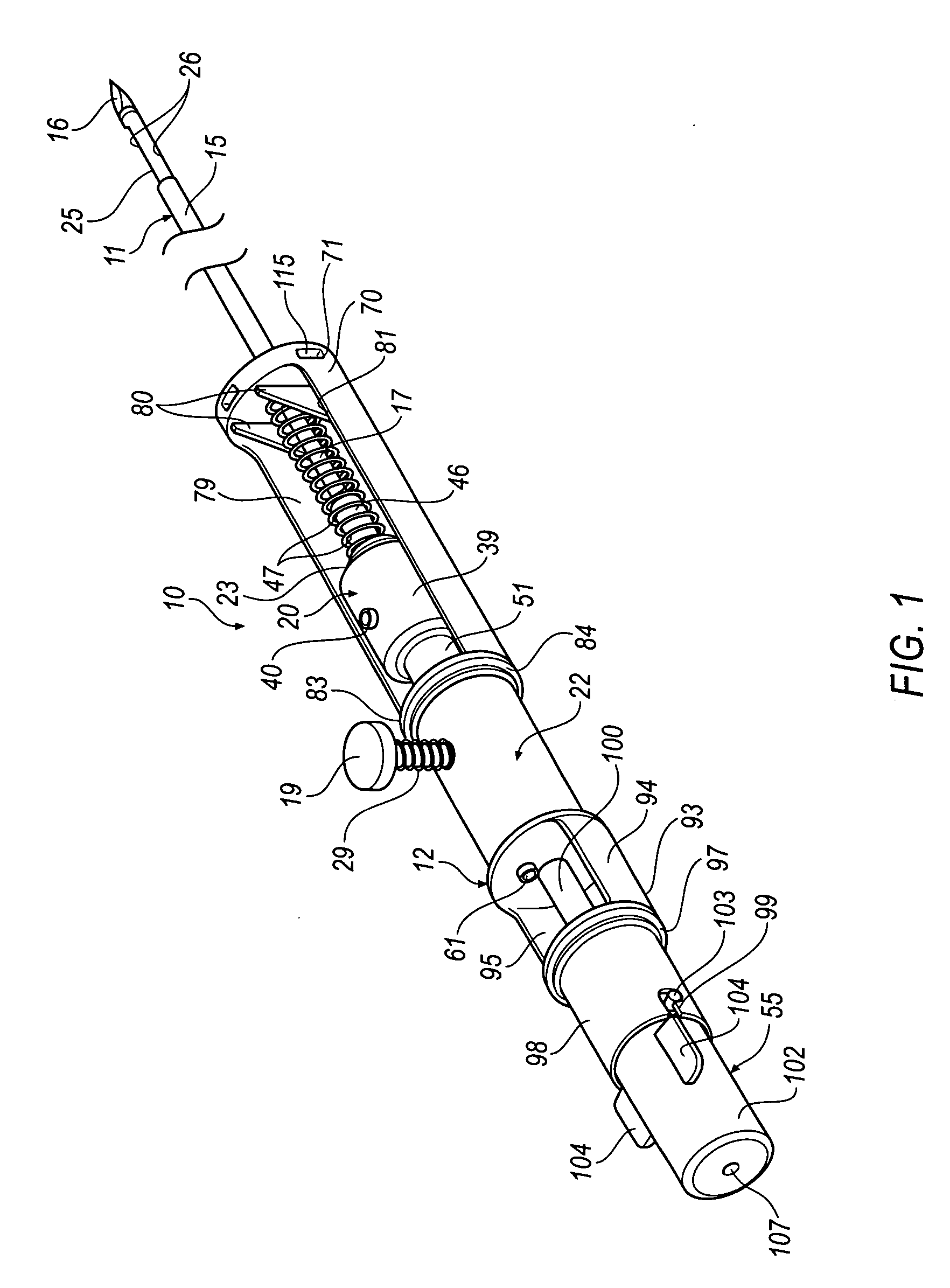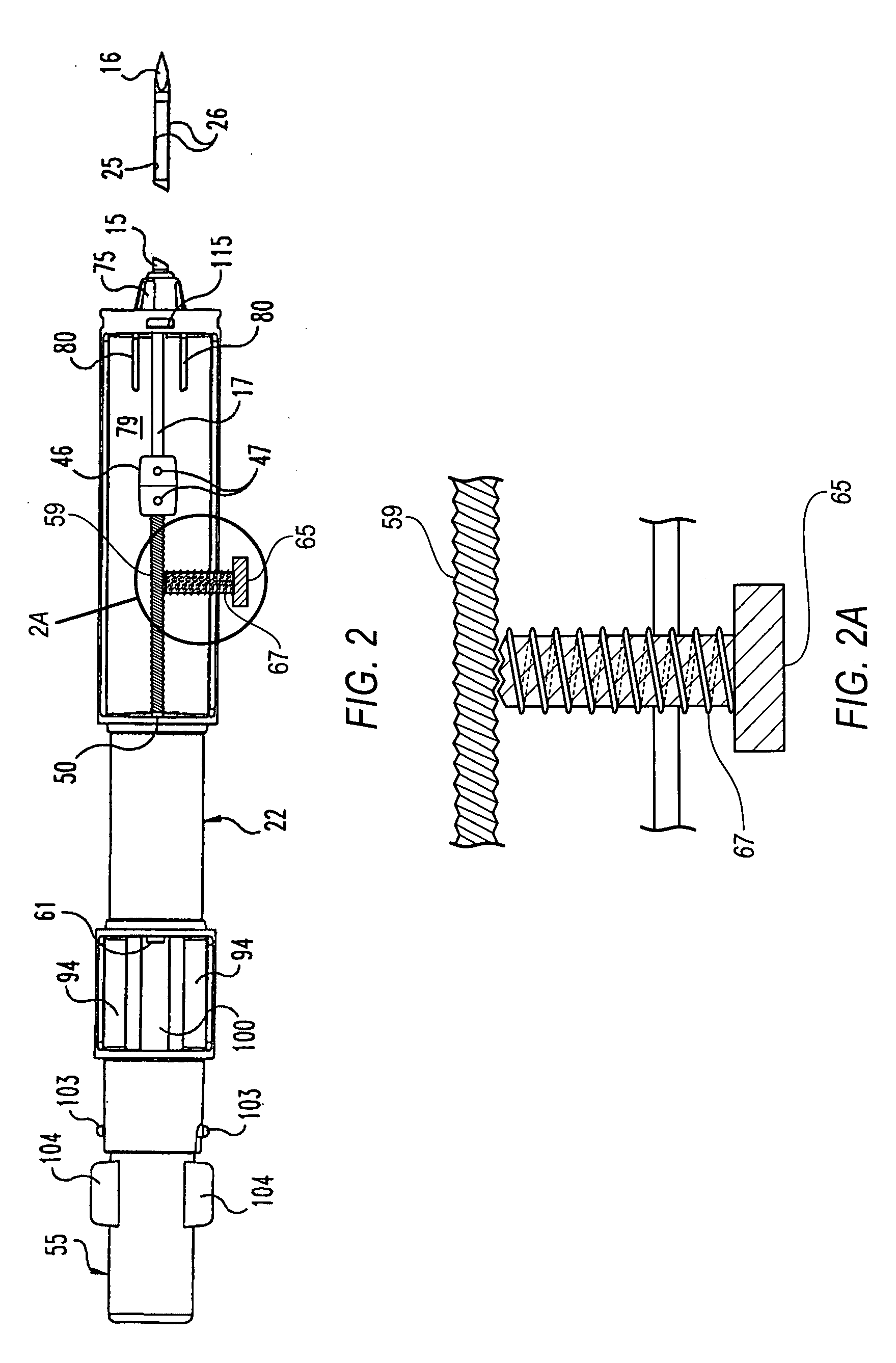Single motor handheld biopsy device
a biopsy device and single-motor technology, applied in the field of single-motor handheld biopsy devices and disposable biopsy devices, can solve the problems of increased risk of infection and bleeding at the sample site, significant trauma to breast tissue, and requiring considerable recovery time for patients, so as to achieve the effect of maximizing the length and overall size of the core, avoiding infection and bleeding, and ensuring the integrity of longitudinal integrity
- Summary
- Abstract
- Description
- Claims
- Application Information
AI Technical Summary
Benefits of technology
Problems solved by technology
Method used
Image
Examples
Embodiment Construction
[0036] For the purposes of promoting an understanding of the principles of the invention, reference will now be made to the embodiments illustrated in the drawings and specific language will be used to describe the same. It will nevertheless be understood that no limitation of the scope of the invention is thereby intended. The invention includes any alterations and further modifications in the illustrated devices and described methods and further applications of the principles of the invention which would normally occur to one skilled in the art to which the invention relates.
[0037] A tissue biopsy apparatus 10 in accordance with embodiments of the present invention is shown in FIGS. 1-5. In FIG. 1, an embodiment of the biopsy apparatus includes a cutting element 11 mounted to a handpiece 12. The cutting element 11 is sized for introduction into a human body. Most particularly, the present invention concerns an apparatus for excising breast tissue samples. Thus, the cutting elemen...
PUM
 Login to View More
Login to View More Abstract
Description
Claims
Application Information
 Login to View More
Login to View More - R&D
- Intellectual Property
- Life Sciences
- Materials
- Tech Scout
- Unparalleled Data Quality
- Higher Quality Content
- 60% Fewer Hallucinations
Browse by: Latest US Patents, China's latest patents, Technical Efficacy Thesaurus, Application Domain, Technology Topic, Popular Technical Reports.
© 2025 PatSnap. All rights reserved.Legal|Privacy policy|Modern Slavery Act Transparency Statement|Sitemap|About US| Contact US: help@patsnap.com



